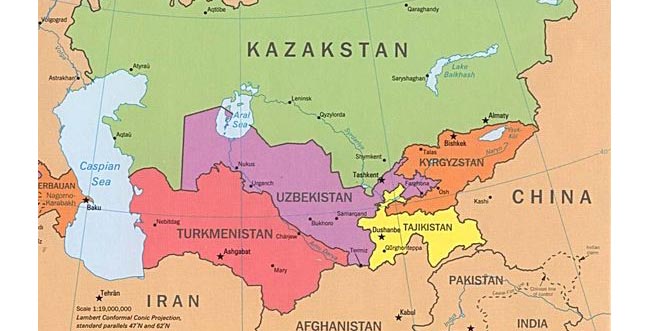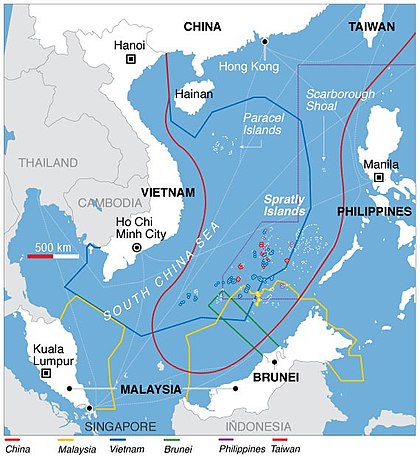By Abhay Kumar Singh
Demonstrating India’s resolve to restore status quo ante of Line of Actual Control (LAC) during the ongoing standoff with China, Prime Minister Modi firmly indicated that “The age of expansionism is over, this is the age of development. History is witness that expansionist forces have either lost or were forced to turn back.” Even though, Indian Prime Minister was echoing historical truism about grave consequences of mindless aggression and irredentism, a tweet from the Chinese embassy posited that China had demarcated boundary with 12 outs of its 14 neighboring countries, hence it was “groundless to view China as “expansionist”, exaggerate & fabricate its disputes with neighbors.” This egregious falsehood about China’s virtuosity in boundary settlement comes at a time when Chinese blatant irredentism has been causing widespread alarm in the Indo-Pacific region and beyond in the midst of COVID 19 pandemic, an inferno which China helped light.

Just a day prior, Chinese social media was rife with a bitter campaign against Russia in response to a rather innocuous video posted by the Russian embassy in Beijing celebrating the 160th anniversary of the founding of Vladivostok. China’s wolf warriors, which included former diplomats, prominent journalists and commentators began pillorying Russia recalling bitter memories of China’s ‘centuries of humiliation’ and bitter annexation of Chinese land then known as ‘Hai Shen Wai’ by Russia through an unfair treaty in 1860 in the Second Opium War.

It is noteworthy that Russia had made rather significant concessions to settle its 4300km long border with China in July 2008. The Russian government conceded most in the final round of boundary negotiations, yielding half of Heixiazi (Bolshoi Ussuriysky in Russian) Island and all of Yinlong (Tarabarov) Island and, therefore, with sacrificing most of the remaining disputed territory Moscow expected much greater net benefits in terms of Chinese goodwill. Notwithstanding the boundary settlement, China has continued with its efforts to change the demography of the Siberian region with illegal migration from Northern China. The egregious social media response about Vladivostok highlights that Chinese polity does not even value a formal land boundary agreement signed in the 21st century. China still claims at least 160,000 sq km of more land while Vladivostok is just the tip of the iceberg.
A recent piece by Prof P Stanton has highlighted a pattern in China’s boundary settlement with Central Asian States. He has argued that while Beijing had displayed an urgency in settling the border with Kazakhstan, Kyrgyzstan, and Tajikistan, the Chinese border negotiation tactics with these countries blended “incentives with coercion”. Beijing settled for a third of the territories it claimed from Kazakhstan. Yet, the Kazakhs had to admit they had gained. In addition, Kazakhstan had to denounce Uyghur separatism and curb anti-China activities. In a similar pattern, Kyrgyzstan had to cede 1,20,000 hectares in a dubious exchange for Chinese assistance. Tajikistan was made to surrender 1,100 square miles in 2010.

While China’s irredentist approach in the Bhutanese Doklam Plateau was clearly evident in 2017, Beijing has now laid a new claim on the Sakteng Wildlife Sanctuary project in Bhutan. Myanmar has accused China of creating internal instability by arming insurgent groups in the Rakhine State in western Myanmar that borders China.
China’s grey-zone campaign to assert uncontested control over the South China Sea and jurisdiction over disputed islands in the East China Sea has been going on for much longer and has turned a darker shade of grey over time. With the construction of artificial islands with airstrips and surveillance platforms, China has progressively built the capability to exercise control over maritime space of the South China Sea. In the East China Sea, China promulgated ADIZ in November 2013. In addition, a raft of maritime and aerial incursions into the vicinity of the disputed islands has become now a permanent feature.
China’s revisionist and irredentist aggression has further intensified in recent times. China has announced the establishment of two districts to administer islands and reefs in the disputed South China Sea in an apparent bid to strengthen its claim to sovereignty over the area. China has prevented Malaysia from oil exploration, rammed and sunk fishing boats of Vietnam, threatened Philippines warship, intensified intrusion in Japanese water around Senkaku, and violated Taiwan’s airspace.

There is a strong consensus among observers of Chinese foreign policy that Xi Jinping has taken the confrontational approach to a new level. China began to exhibit more assertive foreign-policy behavior around 2009, a trend that has accelerated since Xi became China’s paramount leader in 2012. The shine has completely worn off from China’s so-called ‘charm offensive’ and has turned into a charmless one.
China needs to note that PM Modi’s reference to ‘expansionism’ echoes the mounting international concern over China’s insatiable irredentism under Xi Jinping, who has simultaneously opened multiple fronts. Beijing’s blatant aggressiveness is accelerating debates about the underlying costs of reliance on China and spurring support for closer coordination in the wider Indo-Pacific. There is growing realization in the region that only a chastened China saddled with mounting costs and loss of face will cease its aggressive expansionism.
Abhay Kumar Singh is a Research Fellow at Manohar Parrikar Institute for Defence Studies and Analyses (MP-IDSA).

